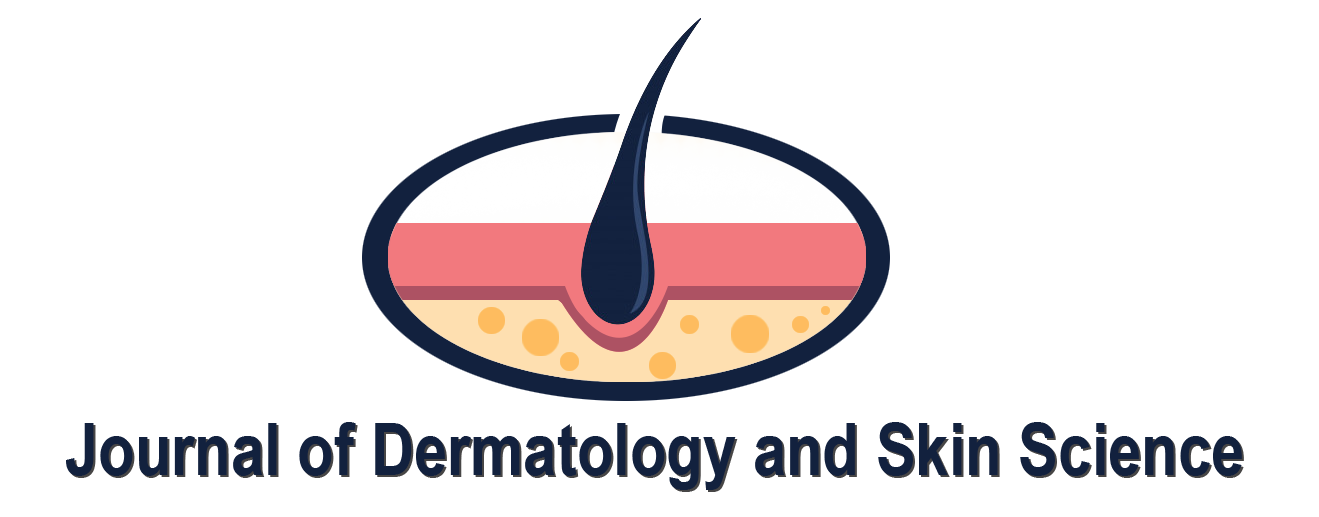Extracellular Vesicles as Intercellular Communication Messengers Involved in Human Skin Health and Disease
Irène Tatischeff*
Honorary CNRS (Centre National de la Recherche Scientifique, Paris, France) and UPMC (Université Pierre et Marie Curie, Paris, France) Research Director; Founder of RevInterCell (www.revintercell.com), a Scientific Consulting Service, Orsay, 91400, France
Cell-derived extracellular vesicles (EVs) are newly uncovered messengers for intercellular communication. They are released by almost every cell type in the three domains of life, i.e. Archea, Bacteria and Eukarya. They are known to mediate important biological functions and to be increasingly involved in cell physiology and in many human diseases, especially cancers. The aim of this review is threefold: (1) to stress the outstanding characteristics of Extracellular Vesicles (EVs) as Intercellular Communication Messengers; (2) to focus on some interesting papers searched in PubMed, specifically dealing with EV involvement in skin physiology and in a few important skin diseases treated in dermatology; (3) to mention the potential of EVs as future theranostic agents for diagnosis, prognosis and therapy of some major skin illnesses, such as Melanoma and Merkel Cell Carcinoma - an ongoing goal for achieving skin-devoted liquid biopsy and future individual patient precision medicine. However, many challenging points about EV research must still be resolved before reaching this promising perspective.
View / Download Pdf Beta-Glucans: A Biomimetic Approach for Reducing Chronicity in Delayed Wound Healing
Arthe Rajarajaran, Arivuoli Dakshanamoorthy*
Crystal Growth Centre, Anna University, Chennai
The challenge which grows over time in the chronic wound healing is a self-care wound dressing. These wounds have unfavourable impact on patients wellbeing and also challenging to the health economy. The wound healing requires a complex series of physiological and immunological processes with adequate nutrition. Any derangement of immune signals at any stage can lead to impaired wound healing which alters the key transition point that lies between the inflammatory and proliferation phase that destroys the components of Extracellular matrix. The Extracellular matrix is responsible for regulating the growth factors and its receptors that are important for wound healing. To boost up the growth factor signalling and accelerating the chronic wound healing, a new biomimetic approach of mimicking the role of extracellular matrix helps in the development of instructive wound dressing. Thus this review deals in discussing the tremendous activity of the Natural polysaccharide called β-glucan on wound healing signalling which may help in mimicking the role of extracellular matrix.
View / Download Pdf Commentary: Using the Combination of Kerure Clamp and Serrated Punch to Decrease Transection Rate in Follicular Unit Extraction
View / Download PdfAmit Shivaji Kerure1, Shaurya Roahtgi2*, Shashank Bansod3, Umesh Bilewar4
1Consultant dermatologist and hair transplant surgeon, Dr. Amit Kerure skin clinic, Navi Mumbai 400703, Maharashtra, India
2Consultant dermatologist and hair transplant surgeon. Dr. Shaurya’s skin clinic, A6, Ratandeep CHS, SV road, Andheri west, Mumbai-400058
3Consultant dermatologist and hair restoration surgeon, Hi-Tech Skin clinic and hair transplant Centre, Nagpur, Maharashtra, India
4Consultant dermatologist and hair transplant surgeon, Ozone clinic, Navi Mumbai, Maharashtra, India
Essential Oil-Induced Scarring
View / Download PdfShane M. Swink, D.O., M.S.1*, Tanya Ermolovich, D.O.1,2
1Division of Dermatology, Lehigh Valley Health Network, Allentown, PA
2Advanced Dermatology Associates, Ltd., Allentown, PA
A Very Rare Case of Immunoglobulin A Vasculitis in an Adult with Alcoholic Liver Cirrhosis
Kanthi Bommareddy1, Rabah Alreshq1, David Jones2, Gurpreet Singh1*
1Department of Medicine, Albany Medical Center, Albany, NY 12208
2Department of Pathology and Laboratory Medicine, Albany Medical Center, Albany, NY 12208
Immunoglobulin A vasculitis, formerly known as Henoch-Schönlein purpura, is an IgA-mediated small-vessel vasculitis that predominantly affects children with an incidence of 10-20 per 100,000 per year. It is very unusual in adults; however, cirrhosis has been associated with immunoglobulin A vasculitis because of the cirrhotic liver’s inability to metabolize circulating IgA complexes, resulting in systemic deposition particularly in the skin and kidney. In cirrhosis, the most common causes of acute kidney injury are those of prerenal azotemia including hepatorenal syndrome followed by intrarenal causes. Our very rare case of kidney injury in a cirrhotic patient is due to deposition of circulating IgA complexes. We present a very rare case of palpable purpura and acute kidney injury consistent with immunoglobulin A vasculitis in an adult with alcoholic cirrhosis. This patient’s skin and renal findings improved with oral prednisone.
View / Download Pdf Essential Oils as Skin Permeation Boosters and Their Predicted Effect Mechanisms
Ufuk Koca Caliskan*, Methiye Mancak Karakus
Gazi University, Faculty of Pharmacy, Department of Pharmacognosy and Pharmaceutical Botany 06330 Etiler, Ankara, Turkey
Transdermal drug delivery system is an administration route, where active molecules are administered through the skin with advantages of a lesser amount of hepatic first pass effect, constant plasma drug concentration and safety. The skin has a barrier function for the passage of medicines as well as toxic molecules, thus, permeation boosters/enhancers are used to increase the permeability of medication through the skin. In this mini review, recent studies on essential oils that can be used to increase skin penetration in transdermal applications and the possible mechanisms of their effects are reviewed. Essential oils increase skin penetration by interacting with the stratum corneum (SC). They were found to be successful in increasing skin penetration of both lipophilic and hydrophilic drugs. Moreover, essential oils do not accumulate in the body since they are volatile, and also are easily discharged from the body through feces and urine. They are preferred because essential oils are natural, mostly do not damage the skin while increasing skin penetration, less toxic, and less allergenic.
View / Download Pdf